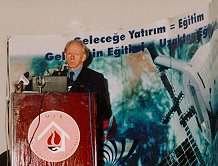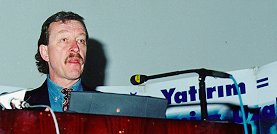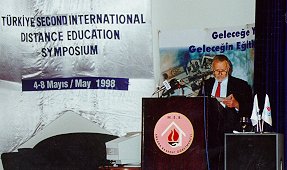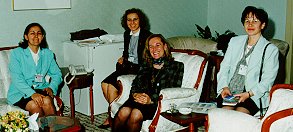
|
Subsequent talks picked up and developed many of the points Sir John
raised. Michael Moore, head of the American Center for the Study of Distance Education,
noted growing problems in higher education: falling standards, increased student numbers,
severe financial constraints and the growing irrelevance of the curriculum. He pointed to
the role of technology and, in particular, to the Internet, as offering solutions,
however, he stressed the importance of simpler technologies in less well off countries!
Michael went on to suggest that it was the educational systems that were important, not
the institution. Thus, the state need not set up an expensive centralised DE institution,
but simply organise experts in existing establishments to achieve the same effect. He
indicated that, traditionally, teaching has been organised as a craft. A single teacher is
generally responsible for every aspect of a course, however, with increasing numbers of
students it becomes an impossible task. The answer is to reorganise, to employ
professionals to prepare courses centrally, but to provide decentralised (and hence close
local) support for learners. |








